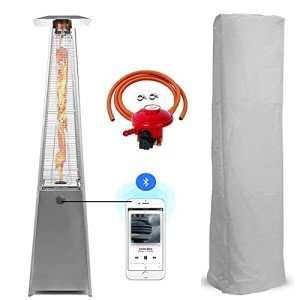Buying Gas Radiant Heaters: A Comprehensive Guide
Gas radiant heaters have gotten popularity in the last few years for their performance and capability to provide immediate heat. As more property owners and companies try to find ways to keep their spaces comfy, comprehending the functions, advantages, and factors to consider when purchasing these heating systems can be very informative. This short article explores the complexities of gas radiant heaters, assisting potential purchasers in making informed decisions.
What are Gas Radiant Heaters?
Gas radiant heaters are gadgets that utilize propane or natural gas to give off heat straight into a room. Instead of heating the air, they warm objects and individuals in their vicinity, offering convenience quicker and efficiently. Patio Heating Systems are popular for both indoor and outdoor settings due to their flexibility and efficiency.
Key Features of Gas Radiant Heaters
- Direct Heating: Unlike standard heaters that warm the air, gas radiant heaters offer direct warmth, making them an efficient choice for quickly warming up spaces.
- Portability: Many models are readily available as portable systems, enabling them to be easily moved from one area to another.
- Fuel Variety: Gas radiant heaters can be powered by natural gas or propane, offering users flexibility based upon accessibility and choice.
- Adjustable Settings: Most gas radiant heaters featured adjustable heat settings, allowing users to customize the level of heat based on their requirements.
Benefits of Gas Radiant Heaters
- Energy Efficiency: These heaters convert gas into heat efficiently, leading to lower utility costs compared to electric heaters.
- Quick Heating: Radiant heat is felt almost immediately, making these heaters suitable for unexpected temperature drops.
- Low Maintenance: Gas radiant heaters typically need less maintenance than electric designs, making them a problem-free option.
- Eco-friendly: When powered by clean natural gas, these heaters can be a more ecologically sustainable option compared to other heating methods.
Kinds Of Gas Radiant Heaters
When it comes to selecting a gas radiant heater, it's important to understand the different types available. Below are the most typical options:
- Indoor Gas Radiant Heaters: Designed for indoor spaces, these heaters are usually vented or unvented and typically featured integrated security functions.
- Outdoor Gas Radiant Heaters: Commonly used in outdoor patios or outdoor dining locations, these heaters are designed to withstand the aspects.
- Wall-Mounted Gas Radiant Heaters: A space-saving option, these units are ideal for smaller sized areas and can be outfitted with different heat outputs depending upon the location's needs.
- Freestanding Gas Radiant Heaters: These portable models can be used in different areas, perfect for those who require versatility.
Buying Guide: How to Choose the Right Gas Radiant Heater
When purchasing a gas radiant heater, numerous aspects should be considered to guarantee you pick the ideal design for your space:
1. Heating Capacity
- Measured in BTUs (British Thermal Units), the heater's capability figures out how much area it can effectively warm. Buyers ought to assess their specific needs based on space size.
| Room Size (sq ft) | Recommended BTUs (for Gas Radiant Heaters) |
|---|---|
| 100 - 200 | 5,000 - 10,000 BTUs |
| 200 - 400 | 10,000 - 20,000 BTUs |
| 400 - 600 | 20,000 - 30,000 BTUs |
| 600 - 800 | 30,000+ BTUs |
2. Type of Gas
- Consider whether you will be utilizing propane or gas, as various heaters deal with different fuel types.
3. Security Features
- Look for models geared up with safety functions such as automatic shut-off valves, tip-over security, and oxygen exhaustion sensors.
4. Setup Requirements
- Some heaters may require professional setup, particularly vented designs. Make sure to consider the costs and requirements associated with installation.
5. Portability
- If versatility is important, consider portable designs that can be easily moved from one place to another.
Installation and Maintenance
Gas radiant heaters are generally uncomplicated to install, particularly portable models. Nevertheless, vented options might necessitate professional setup to guarantee they meet regional safety codes.
Maintenance generally includes:
- Regular cleansing to prevent dust accumulation.
- Inspecting gas connections and fittings for leaks.
- Making sure safety functions are practical.
Pointer: Regular checks around the unit can assist extend its life-span and maintain security.
Frequently Asked Questions (FAQs)
Q1: Are gas radiant heaters safe for indoor use?A1: Yes
, as long as they are appropriately vented and equipped with essential safety functions, they can be safely utilized inside your home.
Q2: Can gas radiant heaters be used in enclosed spaces?A2: Unvented gas heaters can pose dangers in enclosed spaces due to possible suffocation or carbon monoxide accumulation. Constantly guarantee adequate ventilation. Q3: How do I understand what size heater I need?A3: The suitable size depends upon the location you plan to heat. Describe the BTU chart
above to determine your needs. Q4: What is the difference between propane and natural gas heaters?A4: The primary distinction lies in their energy source
; propane is delivered through tanks, while gas is normally piped into homes. Q5: How can I optimize efficiency?A5: Ensure the heater is appropriately sized for your space, keep it regularly, and think about using it in combination
with other heating methods for optimum convenience. Gas radiant heaters can be a fantastic addition to any home or organization, using energy-efficient and fast heating solutions. By understanding the various types, functions, and considerations
when purchasing, purchasers can make educated choices that satisfy their heating needs. With the ideal option, these heaters supply comfort, reliability, and an inviting environment throughout cooler seasons.

